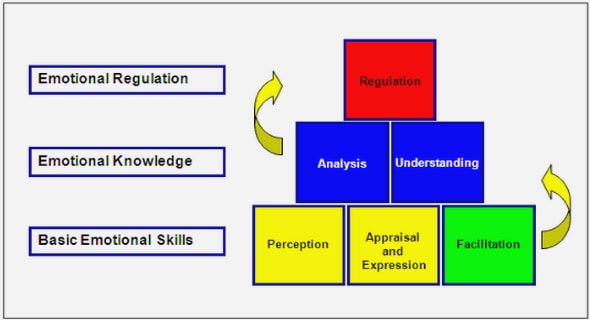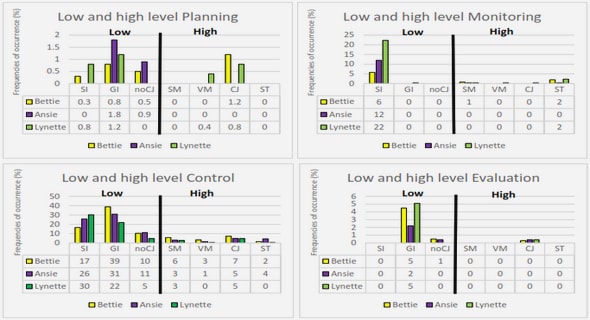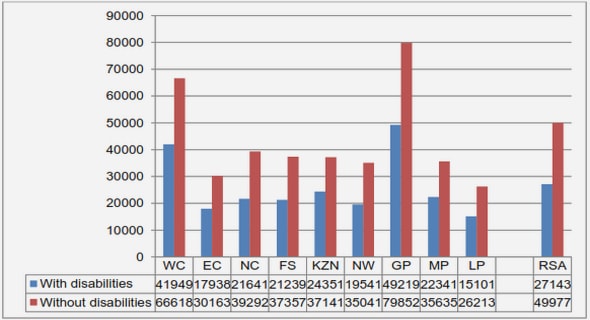Get Complete Project Material File(s) Now! »
Translucent networks: bringing transparency to the core network
Most of the transport networks deployed nowadays, can be qualified as opaque networks. In such networks, the optical signal is transmitted over point-to-point links from source to destination, each intermediate node between two successive links converts it to an electrical signal for routing purposes. This conversion is performed thanks to an electrical component called a transponder. By definition, a transponder is a device that allows access to WDM channels. Transponders can be tunable or fixed in terms of wavelengths. A transponder receives an optical signal, detects its carrier wavelength by means of a photodetector and a filter then converts it into an electrical signal. This operation is called Optical-to-Electrical conversion (OE). A laser, performing intensity modulation over the electrical signal, emits an optical signal with a specific wavelength. In case of a tunable transponder, an array of pretuned lasers is deployed [11]. This operation is called Electrical-to-Optical conversion (EO). In its simplest form, a transponder receives a signal carried by a short-reach (SR) carrier wavelength (grey light ), converts it to an electrical signal and then to an optical long-reach (LR) signal (colored signal) carried by a WDM wavelength according to the ITU grid recommendations [54]. The reverse operation (i.e., transforming a LR signal into a SR signal) is also possible through a transponder. Figure 2.3 depicts a transponder operating in two fashions: LR-to-SR and SR-to-LR. Figure 2.4 illustrates an opaque node At the input of the node, WDM signals are first demultiplexed into elementary colored signals. Each of these signals is converted into a short-reach grey signal by means of a transponder. The SR signal is then fed to an opaque port attached to the Electrical Cross-Connect4 (EXC). This port transforms the SR signal into an electrical signal to be processed in the EXC. If the data signal has reached its destination at the current node, the EXC routes it towards an output port at to the upper SONET/SDH or MPLS layer interface. If the current node is only a transit node on the signal’s route, the EXC redirects it towards an opaque port corresponding to the convenient direction (i.e., the corresponding output fiber). The signal is then transformed into a SR optical signal at the opaque port, then to a LR signal carried by a certain wavelength, within the transponder. Optionally, the EXC can groom other small granularity electrical signals to the considered signal before transmission. All outgoing colored signals are multiplexed into one WDM composite signal before transmission over the fiber.
Transparent Networks: pros and cons
In transparent networks, OE and EO conversions occur only when signals need to be added (resp. dropped) to (resp. from) the optical layer. Transparency in this concern, is not only it also reflects the transparency of network components to (i ) the digital signal format (SONET/SDH, IP, …), (ii ) the signal’s bitrate, and (iii ) the modulation format of optical signals (RZ, NRZ, …) [15]. In this regard, if protocols or bit rates change in future, the network is still likely to be able to support changes without requiring a complete overhaul. Figure 2.5 depicts a 4-degree transparent node architecture, regardless of the optical switching technology adopted in the OXC. An incoming signal is processed at the OXC, its different wavelengths7 are directed, each to its convenient output direction:
• A Pass-through wavelength is sent to the OXC part belonging to the corresponding fiber on the wavelength’s next hop8.
• A wavelength that had reached its destination node in the core network is processed at the Add/Drop Multiplexer (ADM) that feeds it into a vacant Drop transponder in order to process its data at the EXC. A signal originating at a node’s EXC is first modulated on a WDM wavelength by an Add transponder, sent by the ADM to the convenient direction of the OXC, that incorporates it in the composite WDM signal to finally, be transmitted over the output fiber. Add/Drop transponder usage is detailed in Section 2.4.1.
Add/Drop functionality
Add/Drop functionality serves not only the traffic terminating at the node, but also a part of the pass-through traffic, as it will be explained in the following. IP traffic nowadays circulates through the core networks over WDM or DWDM wavelengths. Without getting into the details of transmission inside the OXC of a network node, a colored signal is subject to optical demultiplexing at the reception. Three kinds of signals can be distinguished at this level:
• Signals to be ignored by the EXC of the node: These colored signals pass transparently through the OXC towards the required egress direction. They are multiplexed with other wavelengths at the output of the OXC.
• Signals to be terminated at the EXC of the node: When some wavelengths have reached their destination in the core network, each one of them is forwarded to a transponder (fixed or tuned). Each resulting grey signal is then sent to an opaque port of the SONET/SDH EXC. The individual clock corresponding to each optical carrier is recovered. Erroneous bits are detected and eventually corrected. The SONET/SDH EXC eventually proceeds to restoration, if needed.
• Signals driven to the EXC only to be groomed with other signals on the same wavelength: Multiple lower-speed signals can be aggregated in order to better use the optical channel capacity. The resulting output optical channel is then injected into the core transport network.
In the two latter cases, colored signals are said dropped when extracted from the optical level to be processed by the EXC and added to the optical level if originating (or resulting of a grooming process) at the EXC. Added wavelengths are directed each to its convenient egress degree, multiplexed with other wavelengths to form a WDM composite signal that will be transmitted on the corresponding fiber-link. The add/drop functionalities necessitate transponders to operate successful WDM to SONET/SDH conversion.
Table of contents :
List of Tables
List of Figures
Acknowledgements
Abstract
1 Introduction
2 Problem Statemen
2.1 WDM core networks
2.1.1 Access networks
2.1.2 Metro networks
2.1.3 Core networks
2.2 Actual and future data plane: IP-over-WDM
2.3 Translucent networks: bringing transparency to the core network
2.3.1 Opaque networks
2.3.2 Introduction of optics in the switching core
2.3.3 Transparent Networks: pros and cons
2.3.4 Translucent networks
2.4 Transponders in translucent networks
2.4.1 Add/Drop functionality
2.4.2 Signal’s Regeneration
2.4.3 Wavelength conversion
2.5 Corporate objectives of network operators
2.5.1 QoS
2.5.2 Cost reduction
2.5.3 Eco-sustainability
2.6 Reduction of EO and OE conversions
2.6.1 Grooming vs. 3R regeneration: the reason behind separate operation
2.7 Research scenarii
I Cross-Optimization for Translucent WDM Network Design
3 Quality of transmission in core networks
3.1 Introduction
3.2 A point-to-point WDM transmission system: taxonomy
3.2.1 Optical cross-connects
3.2.1.1 MEMS-based OXC
3.2.1.2 WSS-based OXC
3.2.2 Optical amplifiers
3.2.3 Gain equalization
3.3 Physical Impairments
3.4 Signal Regeneration
3.5 Optical 3R regeneration
3.6 BER estimation
3.6.1 Q factor
3.6.2 BER-Predictor
3.7 Conclusion
4 Survey on Translucent Network Design
4.1 Introduction
4.2 Survey on translucent network design
4.2.1 Study of Ramamruthy et al
4.2.2 Study of Pan et al
4.2.3 Study of Rumley et al
4.2.4 Study of Patel et al
4.2.5 Study of Al Zahr et al
4.2.6 Study of Pachnicke et al
4.2.7 Study of Manousakis et al
4.2.8 Study of Pan et al
4.2.9 Study of Doumith et al
4.3 Conclusion
5 COR2P: an innovative tool for translucent network design
5.1 Introduction
5.2 Translucent Network Design
5.2.1 Problem Statement
5.2.2 Cost Model
5.2.2.1 OpEx cost of a regenerator
5.2.2.2 CapEx and OpEx costs of a translucent node
5.2.2.3 Total cost of a lightpath
5.3 COR2P
5.3.1 Notations
5.3.2 Synopsis of COR2P
5.3.2.1 Step 1 – Preliminary Routing
5.3.2.2 Step 2 – Potential Regenerator Placement
5.3.2.3 Step 3 – Effective RWA and Regenerator Placement
5.4 Illustrative case study
5.5 Results and discussion
5.5.1 Simulation environment
5.5.2 Regeneration Concentration
5.5.3 Regenerator pool sizing
5.5.4 Comparison with other RP approaches
5.5.4.1 LERP
5.5.4.2 RP-CBR+
5.5.4.3 Comparative summary
5.5.4.4 Comparison results
5.6 Conclusion
II Energy-Aware WDM Network Design
6 Green Networking in core networks
6.1 Introduction
6.2 Power-awareness in networks: drivers
6.3 Power-awareness at the WDM core
6.4 Toward dynamic networks
6.5 Considered node architecture: practical constraints
6.6 Related work
6.6.1 Study of G. Shen et al
6.6.2 Study of Xia et al
6.6.3 Study of Idzikowski et al
6.6.4 Study of Yetginer et al
6.6.5 Study of W. Shen et al
6.7 Conclusion
7 Power-Aware Multi-Rate WDM Network Design
7.1 Introduction
7.2 Network resources optimization
7.3 Power consumption optimization in WDM mixed data rates transmission .
7.3.1 Exact approach via linear programming
7.3.1.1 Parameters
7.3.1.2 Variables
7.3.1.3 Constraints
7.3.1.4 Objective
7.3.2 ILP complexity
7.3.3 Heuristic approach
7.3.3.1 Mathematical formulation
7.3.3.2 Chromosome encoding
7.3.3.3 Fitness calculation
7.3.3.4 Crossover and mutation
7.3.3.5 Genetic algorithm solution
7.4 Numerical results and discussion
7.5 Conclusion
8 Conclusions and Perspectives
8.1 Conclusions
8.2 Future work
A Physical layer impairments
A.1 Linear impairments
A.1.1 Attenuation
A.1.2 Amplified spontaneous emission
A.1.3 Dispersion
A.2 Non-linear impairments
A.2.1 Scattering
A.2.2 Self-Phase Modulation
A.2.3 Cross-Phase Modulation
A.2.4 Four Wave Mixing
A.2.5 Out-band Crosstalk
A.3 Summary
List of Publications
Bibliography


